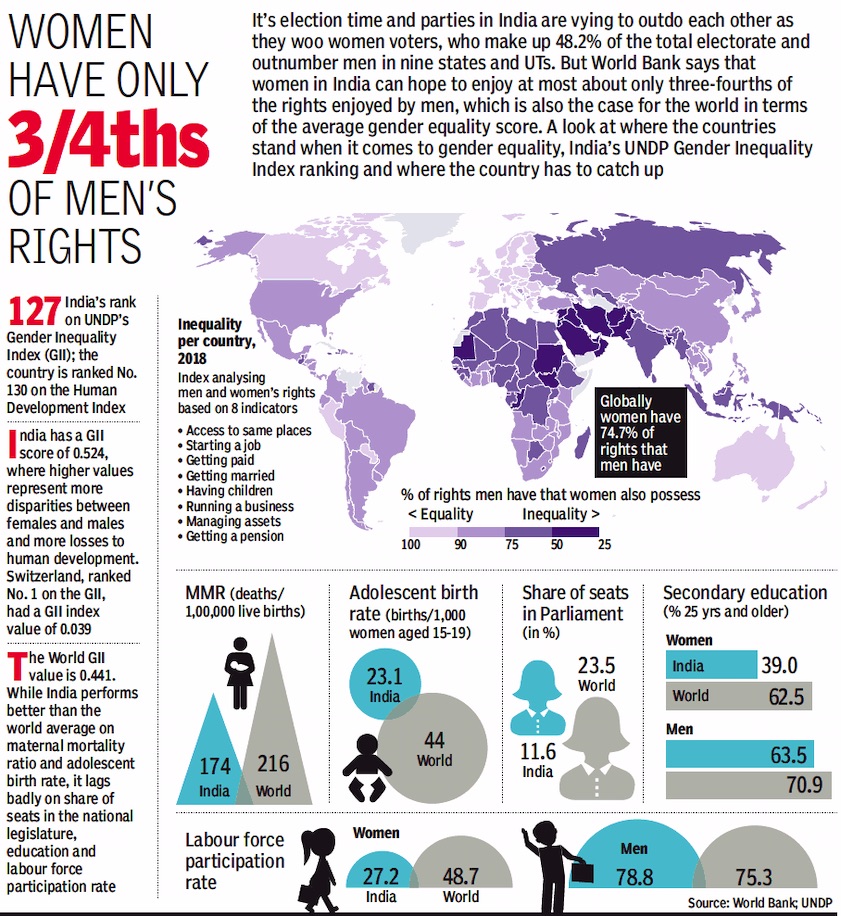Gender equality: India
This is a collection of articles archived for the excellence of their content. |
Contents |
Unpaid labour/ household work
2017: India and other countries
Indian women do most household work, while men do very little, November 1, 2018: The Times of India

From: Indian women do most household work, while men do very little, November 1, 2018: The Times of India
See graphic:
India and other countries- the disparity between men and women spending time on household chores, presumably as in 2017
Indian women spend nearly six hours a day on household chores, apart from paid work, while men put in less than an hour on the unpaid labour. This work includes cooking, cleaning, taking care of children, and other activities that require a household to function. Most of such work is disproportionately shouldered by women across the globe. In Canada, though, the disparity between men and women spending time on household chores is the least. Here's a look:
Rights
… in India and the world: 2018

From: March 16, 2019: The Times of India
See graphic:
Women’s rights in India and the world: 2018
YEAR-WISE DEVELOPMENTS
2019
India slightly better than neighbours
Ambika Pandit, Dec 10, 2019 Times of India
The Human Development Report 2019’s gender social norms index indicates that more than half the world’s people have a high intensity bias against gender equality and women’s empowerment with India actually seeing a backlash. The report also shows that India is only marginally better than the south Asian average on Gender Development Index (0.829 versus 0.828), and ranks at a low 122 of 162 countries on the 2018 Gender Inequality Index.
The data on various dimensions studied for arriving at India’s GDI for 2018 shows that life expectancy at birth for males was 68.2 and for females it was 70.7. Expected years of schooling in case of females was 12.9 and males it was 11.9. Mean years of schooling for males was 8.2 and for females it was 4.7. GNI per capita for females was Rs 2,625 and for males it was 10,712.
The report also puts out a Gender Inequality Index that reflects gender based inequalities in three dimensions - reproductive health, empowerment and economic activity. India has a GII value of 0.501, ranking it 122 out of 162 countries in the 2018 index.